Dilution Refrigerators
The Need for Extreme Low Temperatures and Why
Superconducting quantum computers must operate in an extremely low-temperature environment close to absolute zero, typically requiring the quantum processor's operating temperature to be maintained within the 10 to 20 mK range. Such stringent temperature requirements stem from several key reasons:
Achieving Superconducting Properties: The superconducting circuits that qubits rely on (such as those made of aluminum or niobium) can only exhibit zero-resistance superconducting properties when they are far below their critical temperature.
Maintaining the Quantum State Energy Gap: There is a specific energy difference (energy gap) between the \( \ket{0} \) and \( \ket{1} \) states of a qubit. At higher temperatures, the environmental thermal energy (kBT) may exceed this gap, causing the qubit to randomly jump between the two states without external control, thereby introducing computational errors. Extremely low temperatures ensure that thermal energy is much smaller than the energy gap, maintaining the stability of the quantum states.
Extending Coherence Time: Temperature is one of the main factors affecting a qubit's coherence time. Thermal noise causes random fluctuations and energy relaxation of quantum states, leading to the decay of superposition and entanglement (decoherence). The lower the temperature and the smaller the thermal noise, the longer the qubit can maintain its quantum properties (coherence time), thus allowing for more complex and longer quantum computations.
Reducing Thermal Noise and Vibrations: Qubits are extremely sensitive to minute environmental disturbances. Low temperatures can greatly suppress the thermal motion within materials as well as heat conduction and thermal radiation noise from the external environment. At the same time, the design of cryogenic systems must also consider reducing the impact of mechanical vibrations on the qubits.
Improving Operational Precision: Quantum computation relies on the precise manipulation (via microwave pulses) and measurement of qubit states. Temperature stability is crucial for ensuring the accuracy and repeatability of these operations. Any temperature fluctuation can lead to drifts in control parameters and uncertainty in measurement results.
Achieving Ultra-High Vacuum: Cryogenic surfaces have strong adsorption capabilities (cryopumping), which helps to maintain an ultra-high vacuum environment around the quantum chip, further reducing collisions and interference from residual gas molecules.
Simplifying Isolation of Control Electronics: Placing certain control or readout electronic components (like low-noise amplifiers) in the cryogenic environment can leverage the low temperature to reduce the intrinsic noise of these components and make electromagnetic isolation from the quantum chip easier to achieve.
Extreme low temperature is the physical foundation for overcoming environmental noise, maintaining the stability of quantum states, and achieving high-fidelity quantum operations and measurements, making it an indispensable condition for superconducting quantum computing.
Structure of a Dilution Refrigerator
Here is a brief introduction to wet and dry dilution refrigerators.
| Wet System | Dry System |
|---|---|
| In a wet system, the entire low-temperature section is immersed in a liquid helium-4 (4He) bath at 4K. During the assembly and disassembly of instruments, liquid helium is lost, making it an open-cycle system. | In a dry system, the 4K cooling stage utilizes a closed-cycle cryocooler. It cools the low-temperature section to 4K via heat exchange, significantly reducing liquid helium loss. |
Table Ref: Cao, H. (2021). Refrigeration Below 1 Kelvin. Journal of Low Temperature Physics.
doi:10.1007/s10909-021-02606-7
Modern dilution refrigerators mostly use a dry (Cryogen-free) design. They employ mechanical cryocoolers, typically Pulse Tube Cryocoolers (PTCs), to replace the Helium Bath and the 1K Pot for pre-cooling. The PTC can cool the system down to about 4K, providing the necessary cooling platform for the dilution refrigeration cycle. The main advantage of a dry system is that it eliminates the consumption of expensive and hard-to-handle liquid helium, making operations more automated and convenient. However, the mechanical motion of the PTC can introduce vibrations, requiring additional vibration-damping measures to protect sensitive quantum experiments.
Multi-Layer Thermal Control: The Cold Plates of a Dilution Refrigerator
To remove heat and combat heat leaks, a dilution refrigerator employs multiple platforms (cooling plates or isothermal plates) with progressively decreasing temperatures.
| Dilution Refrigerator Stages | |
|---|---|
| 60K Plate | Temperature around 60K-100K. |
| 4K Plate | Temperature around 4K. This stage is connected to the first stage of the cryocooler and is where components like HEMT amplifiers and thermalizing filters are mounted. |
| 1K Pot (Wet systems only) | In a traditional wet dilution refrigerator, a liquid 4He reservoir pumped to a lower pressure is used to pre-cool the circulating 3He to about 1K. |
| Still Plate | Temperature around 800 mK. This is the "Still" location in the dilution cooling cycle, further reducing heat conduction. Low-frequency filters or DC line heat sinks can be installed here.
Located above the mixing chamber, the much higher vapor pressure of 3He compared to 4He (which is a superfluid with almost no vapor pressure at this temperature) is utilized by heating to evaporate the 3He from the mixture, enabling its extraction and circulation. |
| Heat Exchanger | On its way back to the mixing chamber, the incoming, warmer 3He liquid is pre-cooled by the colder 3He gas flowing out from the Still, increasing cooling efficiency. |
| Cold Plate | Temperature around 100 mK. A buffer layer before the quantum operation zone, often used for mounting circulators and as an intermediate point for heat sinking. |
| MXC Plate (Mixing Chamber) |
Temperature around 10–20 mK, the core region where phase separation and cooling via 3He dissolving across the phase boundary occur. The coldest stage, where key components like the qubit chip, TWPAs, and isolators are mounted. It is the core operational and heat-sinking layer. |
Physical Principle of Dilution Refrigeration
The working principle of a dilution refrigerator is based on the unique physical properties of a mixture of helium's two stable isotopes—Helium-3 (3He) and Helium-4 (4He)—at extremely low temperatures. Simple evaporative cooling, which lowers temperature by pumping away the vapor above a liquid, has its physical limits. Even for liquid 4He with its very low boiling point, pumping on it can only reach a minimum temperature of about 1.2K, because as the temperature drops, the saturated vapor pressure decreases dramatically, reducing the efficiency of evaporation.
Dilution refrigeration technology, however, utilizes the phenomenon that a mixture of 3He and 4He phase separates at temperatures below about 0.87K. Due to differences in quantum statistical effects and interaction forces, the mixture separates into a 3He-rich concentrated phase and a 4He-rich dilute phase. At extremely low temperatures (near 0K), the concentrated phase is almost pure 3He, while the dilute phase still contains about 6.4% dissolved 3He. Due to density differences, the 3He concentrated phase floats on top of the 4He dilute phase. The key to dilution refrigeration is to selectively "pump away" 3He atoms from the dilute phase at the bottom of the Mixing Chamber. The essence lies in the fact that the **differences in vapor pressure and statistical properties between 3He and 4He, combined with the equipment design**, naturally achieve this "selective pumping" effect.
1. Vapor Pressure Difference
2. Thermodynamic & Statistical Property Difference
Ref: https://emp.kip.uni-heidelberg.de/cryotools/doku.php?id=wiki:design_construction |
The circulation process in a dilution refrigeration system is as follows:
3He is pumped out → compressed → pre-cooled → returned to the mixing chamber
4He remains in the system and does not participate in the circulation
When 3He is removed from the dilute phase, to maintain the 6.4% equilibrium concentration, 3He atoms from the concentrated phase spontaneously "dissolve" or "evaporate" into the dilute phase. This process of 3He crossing the phase boundary from the concentrated to the dilute phase is an endothermic process (similar to heat absorption during liquid evaporation), thereby cooling the mixing chamber. To achieve continuous refrigeration, the pumped-out 3He gas needs to be purified, compressed, condensed, and pre-cooled in an external circulation system before being re-injected into the mixing chamber. This combination of design and properties makes it possible to **pump only 3He**, allowing the cooling process to continue indefinitely.
Summary: 3He has a non-zero vapor pressure, evaporates more easily, and can be pumped out; 4He has no vapor pressure, forms a superfluid, and does not participate in the gas-phase circulation.
Quantum Physics Differences between 3He and 4He
Although both 3He and 4He can enter a superfluid phase, their statistical properties and superfluid mechanisms are fundamentally different:
| Property | 4He | 3He |
| Isotope Nature | Boson (integer spin) | Fermion (half-integer spin) |
| Statistical Properties | Bose-Einstein statistics | Fermi-Dirac statistics |
| Superfluid Temperature | ~2.17 K (Lambda point) | ~2.5 mK to 1 mK |
| Superfluid Mechanism | Bose-Einstein Condensation (BEC) (direct particle condensation) | Formation of Cooper pairs (similar to BCS superconductivity) |
| Quantum Phases | Single He II phase | A phase, B phase, A₁ phase |
| Energy Gap | None (phonons and rotons) | Yes (energy required to break Cooper pairs) |
| 3He Superfluid Phase Diagram | 4He Superfluid Phase Diagram |
|---|---|
(3He) Ref: https://fy.chalmers.se/~delsing/LowTemp/LectureHe3/Helium-3.pdf
(4He) Ref: DOI:10.1088/1361-6633/ab3df5
Specifications
Key specifications for evaluating the performance of a dilution refrigerator include:
Base Temperature: The lowest temperature the system can reach with no external heat load. Typically required to be below 10mK, with high-performance systems reaching 5-8 mK.
Cooling Power: The maximum amount of heat that can be removed at a specific temperature point (usually at the mixing chamber, e.g., at 20mK or 100 mK). This is a key metric for assessing the refrigerator's capacity to handle heat dissipation from the quantum chip, cables, and cryogenic electronics. As the number of qubits increases, so does the required cooling power.
Cooldown Time: The time required to cool down from room temperature to the base temperature. For an empty system, this is typically around 12-24 hours, but it will be longer with a fully loaded sample and wiring.
Scalability: As the number of qubits in a QPU increases, the total required cooling power also grows. The cooling capacity of existing refrigerators may pose a bottleneck for future million-qubit systems.
Thermal Load Management: The control and readout cables connected to the QPU conduct heat from the room-temperature end to the cryogenic end. This heat load must be effectively managed, as even microwatt-level heat can destabilize the system.
Experimental Space: Usually determined by the diameter of the Mixing Chamber (MXC) Flange and the available height between the various cold plates, it needs to be sufficient to accommodate the quantum processor package, sample holders, shielding, and other cryogenic components.
Size, Cost, and Power Consumption: Current dilution refrigerators are bulky, expensive, and consume a large amount of power, which limits the deployment and accessibility of quantum computers.
Vibration Level: For dry systems, vibrations introduced by the pulse tube cryocooler need to be effectively suppressed to avoid disturbing the qubits. Manufacturers typically provide vibration data or employ vibration-damping designs.
Maintenance Interval: The pulse tube cold head and helium compressor in a dry system require periodic maintenance.
Integration with Control Electronics: Integrating parts of the control electronics into the cryogenic environment (e.g., Cryo-CMOS technology) is a trend to reduce latency and wiring complexity, but it also brings new challenges in heat dissipation and mechanical integration.
Material Properties at Cryogenic Temperatures: Designing and maintaining a cryogenic system requires consideration of material properties like thermal conductivity and mechanical performance at extremely low temperatures.
The development trend for cryogenic systems is towards higher cooling efficiency, more compact designs, lower costs, and tighter integration with the QPU and other subsystems. Innovations like compact dilution refrigerators and cryogenic photonics are addressing these challenges.
Vendors
The development of dilution refrigerator technology is closely linked to the demands of quantum computing. One trend is that dry (cryogen-free) dilution refrigerators have become dominant in the market. Traditional wet systems require a continuous supply of liquid nitrogen and liquid helium for pre-cooling, which is not only expensive to operate but also poses many logistical and operational inconveniences. The maturation of pulse tube cryocooler technology has made dry systems possible. Almost all major dilution refrigerator suppliers, such as Bluefors, Oxford Instruments, and Maybell Quantum, offer dry systems as their main products. Dry systems significantly reduce the consumption of increasingly scarce helium resources, thereby increasing the accessibility of quantum computing research. Although dry systems require careful management of vibrations from the pulse tube, their overall advantages have made them the standard configuration for current and future quantum computing labs.
Another important trend is the growing demand for higher cooling power as the number of qubits increases. Scaling up quantum computers by increasing the number of qubits to enhance computational power is one of the main goals in the field. However, each qubit requires at least several control and readout cables connecting from room temperature to the mK stage. These cables inevitably conduct heat from higher to lower temperature stages, creating a thermal load. Additionally, low-noise amplifiers, filters, and attenuators installed at the cryogenic stages also generate heat. As the number of qubits expands from tens to hundreds or even thousands, the total thermal load increases significantly. This requires dilution refrigerators to provide sufficient cooling power, especially at the coldest mixing chamber stage (mK level) and the intermediate 4K and 100 mK stages, to counteract this heat and maintain a stable operating temperature for the quantum chip. Therefore, manufacturers are committed to developing systems with greater cooling power (like Bluefors' XLD and KIDE series) and improving the cooling efficiency of existing systems to support larger-scale quantum processors.
| Supplier | Country | Key Products/Services | Key Features/Technology |
|---|---|---|---|
| Bluefors | Finland | Offers various models of dry dilution refrigerator systems, with product lines including the SD (small, fast cooldown), LD (standard), XLD (large experimental space), and KIDE (extra-large, supports >1000 qubits) series. Also provides integrated cryogenic measurement infrastructure, including cables, electronics, and sample holders. | Market leader, known for the reliability, ease of use, and extensive configuration options of its dry systems. |
| Oxford Instruments NanoSci. | UK | Offers both dry and wet dilution refrigerators, including the Proteox and Kelvinox series. The Proteox series is its modern dry system platform, featuring a modular design that allows for configurable experimental space and measurement interfaces. They also emphasize reaching extremely low base temperatures (e.g., the Proteox 5mK model). | Dry/wet systems, modular design, capable of reaching ultra-low temperatures. |
| Maybell Quantum | USA | Focuses on developing more compact, easily integrated, and scalable dilution refrigerator solutions, such as its "Fridge" and "Big Fridge" products, designed to provide significant qubit capacity in a smaller footprint. They also offer innovative low-heat-load flexible cables (Flexlines). | Compact design, high density, integrated wiring solutions. |
Originally written in Chinese by the author, these articles are translated into English to invite cross-language resonance.
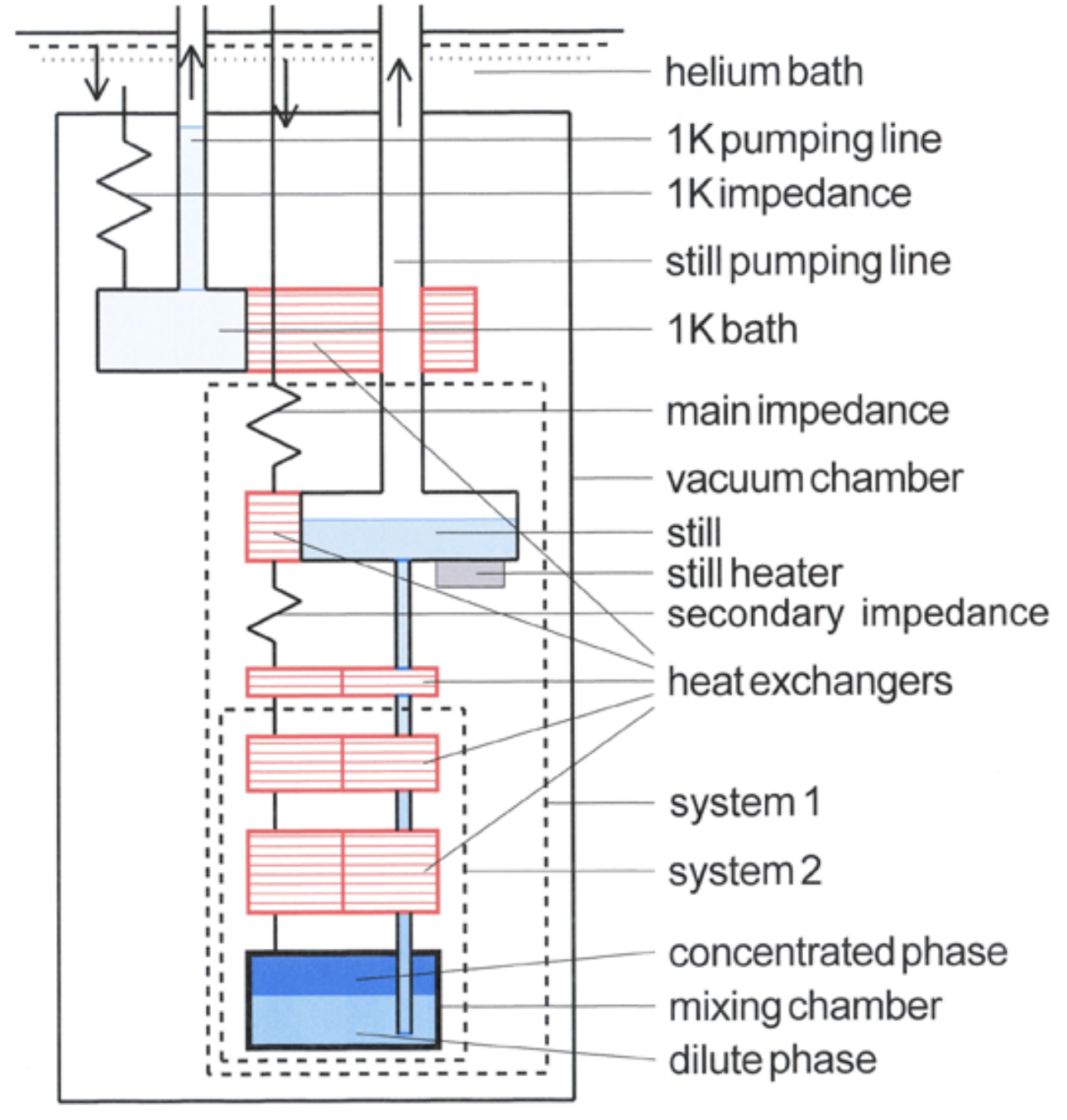
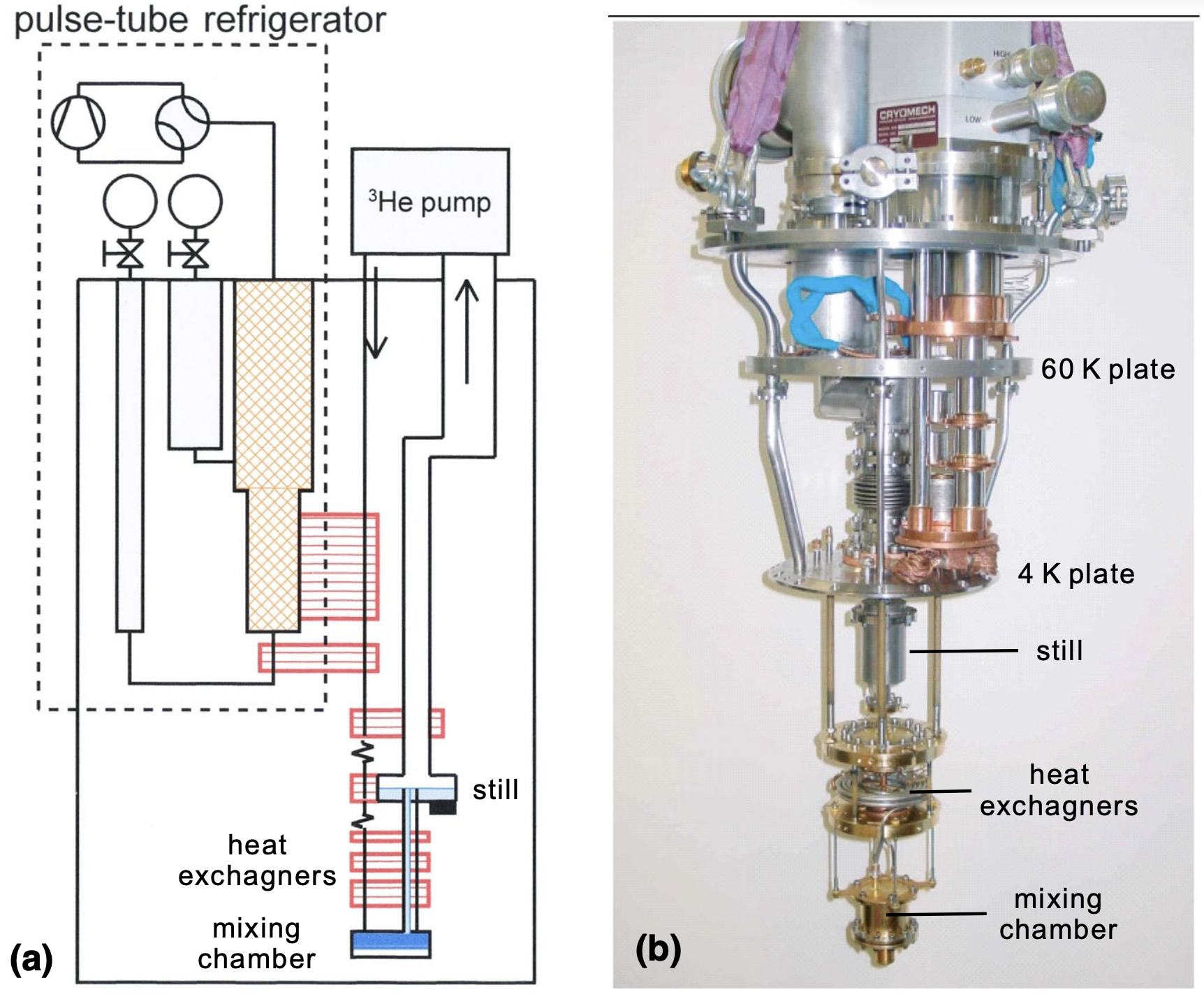
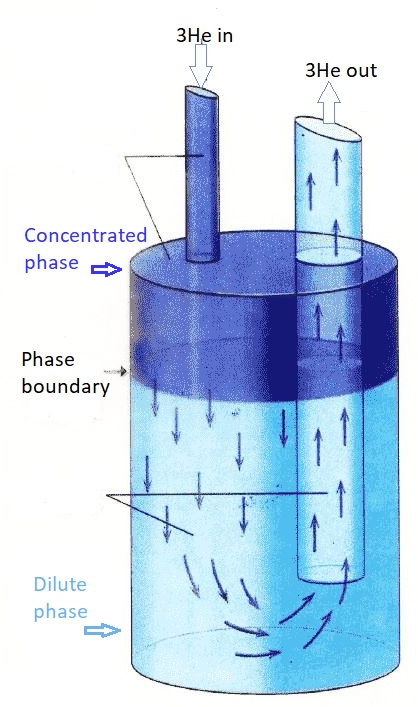
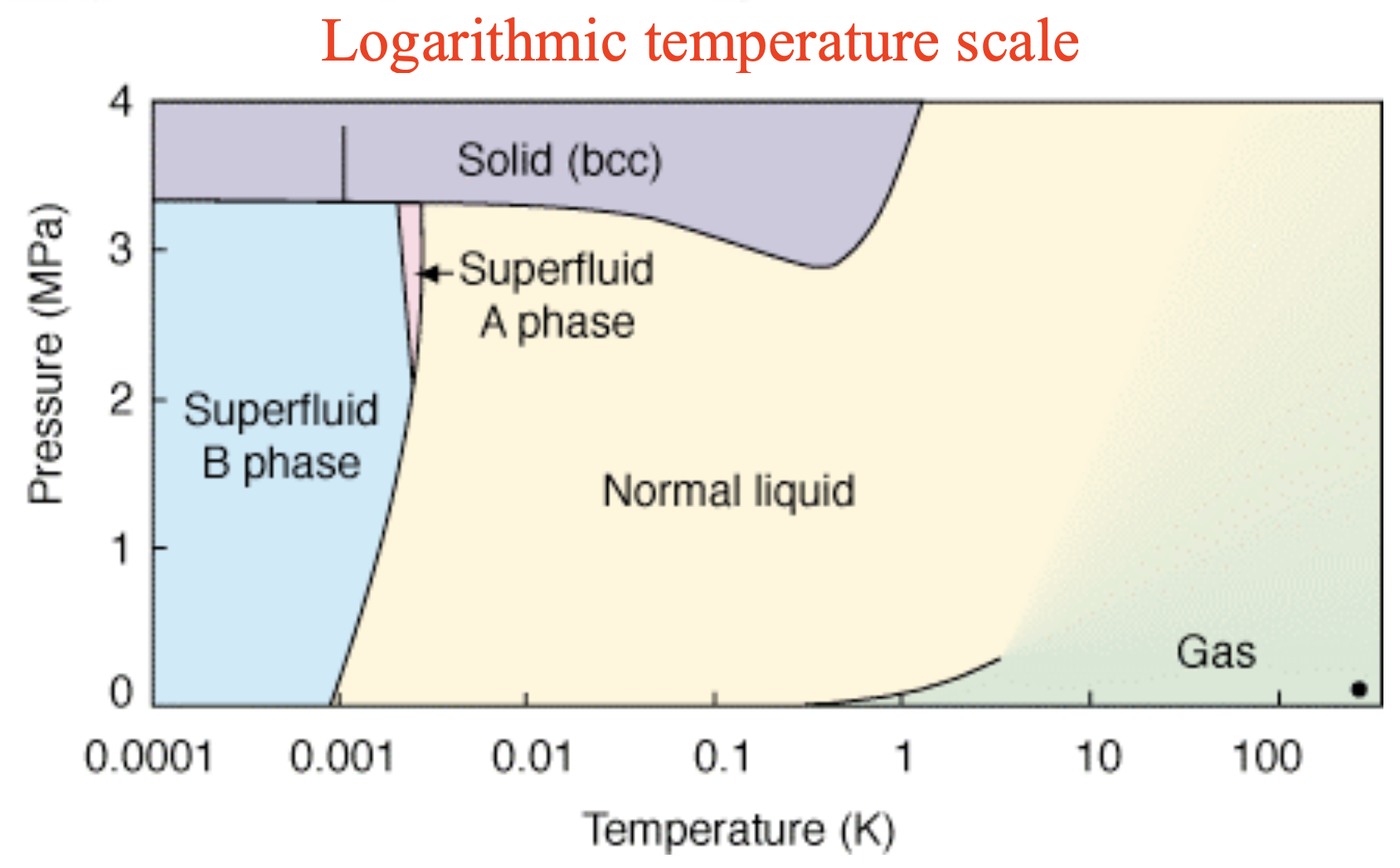
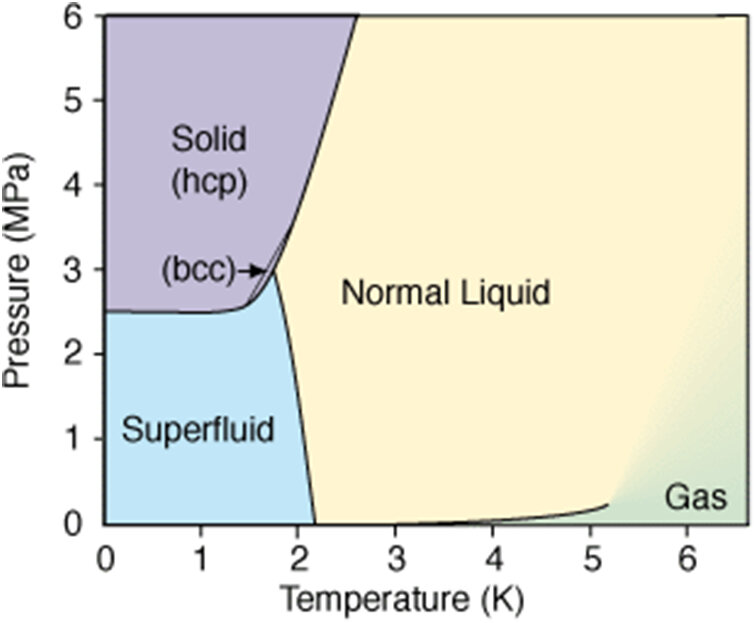
 Peir-Ru Wang
Peir-Ru Wang